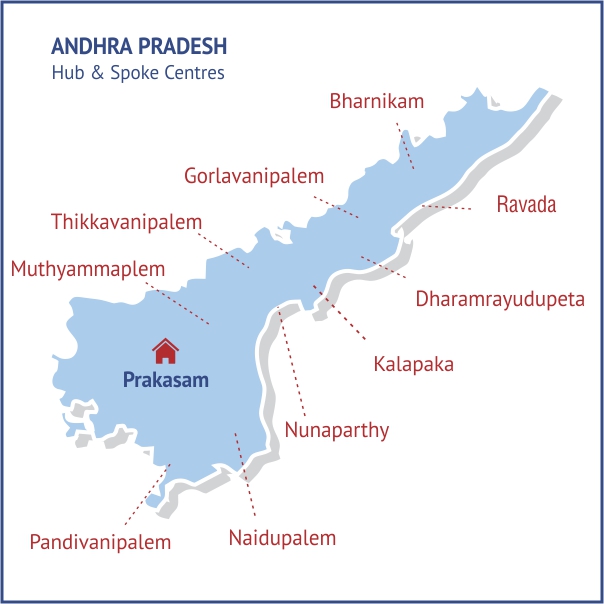HUBS: Gorlivanipalem
SPOKES: Kalapaka, Darmaridpet, Thikkavanipalem, Pandivanipalem, Naidupalem, Muthylammpalem, Bharnikam, Nunaparthi, Madakapalem
Visakhapatnam is a coastal district of Andhra Pradesh; the district is popularly known as “the jewel of the east coast” with coastal belt that stretches to 132 kms. The name of the district was coined after Visakha, the Hindu god of valour. Being surrounded by psychedelic view of long unending coastline, the city has attractive beaches that help in thriving the tourism industry in the area and is also famously called the “City of Destiny”. With a high development index Visakhapatnam stands as the fourth cleanest city of the country. It is one of the fastest growing districts with a population density of 384 persons per square km and population growth at 11.89% during 2001 and 2011. The census 2011 showed a population of 42,88,113 persons. Out of which 21,40,872 were males and 21,47,242 were females, with a sex ratio of 1006 (females for 1000 males). Though literacy rate (representing the gender disparity) of the district is 67.70% (75.47% male and 60.00% female).
There are nearly 43 sub-districts, 15 towns and almost 3,265 villages in the district. Also, with an area of approximately 550 square kilometre, the city of Visakhapatnam is the largest city in the state (district holds an area of 11,161 sq. km.). Situated in the Eastern Ghats on the coast of Bay of Bengal, geographically the district lies at 17°69’N latitude, 83°22’E longitude and 900 m altitude. Being a coastal area, the weather is mostly warm in summers and moderate in winters, annually receiving around 95 cm of rainfall.
The dairy industry of the district is expanding at an exponential rate, with its milk products being exported to South East Asian countries, and hence the area is a hub for workers and traders at large. According to District Statistical Handbook of 2017, a total of 18.89 lakhs of workers are present who are further divided into agriculture workers (5.79 lakhs) and non-agriculture workers (13.10 lakhs); with a huge number of fishing communities residing in the district. One of the challenges that the workers face in the large industrial hub is that of an absence of an efficient market for competitive prices, and at times those are the spaces where exploitation of small and marginal workers take place. Also, need for proper training and skill development of the workers is highlighted time and again by state government authorities.

